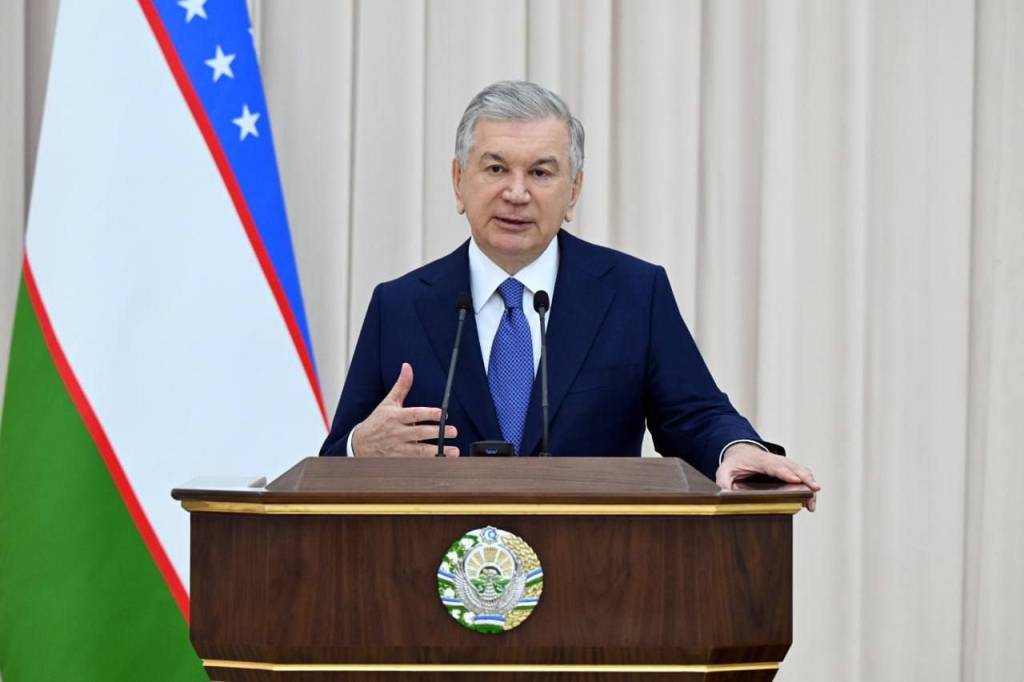On May 2, a meeting was held in Urgench district focused on the priority tasks for the socio-economic development of Khorezm region.
President Shavkat Mirziyoyev emphasized that Khorezm is a crossroads where our nation’s glorious history intersects with ongoing reforms.
Despite its remoteness from major logistics routes and limited natural resources, the past year could be described as a year of small and medium-sized business growth for the region. In 2024, 7,000 new entrepreneurs launched operations in Khorezm, 47 businesses expanded from small to medium-sized enterprises, and 1,700 previously inactive companies resumed activity. As a result, 290,000 people were employed over the year.
Despite recent progress, several pressing issues persist. The poverty rate in Khorezm region remains at approximately 12 percent, with 45,000 people unemployed. In this context, President Shavkat Mirziyoyev stressed that hokims and their deputies must turn every opportunity into a viable project, creating jobs and fostering development in industry, services, tourism, agriculture, and export potential.
The President outlined the region’s opportunities and concrete measures for their practical use.
For example, Uzbekistan’s overall tourism export potential is estimated at $10 billion, of which Khorezm alone could generate $2 billion. However, this potential remains underutilized. The region is home to 263 cultural heritage sites, which could generate additional income and create new jobs if developed into tourist destinations in partnership with entrepreneurs. Funding will be allocated to attract foreign archaeologists to study and restore historical sites.
In Khorezm, more than 40 types of traditional crafts are actively developing, and tourists are particularly interested in witnessing the production process.
The development of public dining establishments also holds significant importance. The President emphasized the need to support restaurateurs who promote national cuisine abroad. The government will partially reimburse expenses related to Uzbek restaurants’ registration, licensing, and operation overseas.
Discussions also covered the expansion of hotel capacity and transportation routes, creating new entertainment and themed venues, and training tour guides and waitstaff.
Overall, the goal for the current year is to implement 91 projects worth $200 million, create 100,000 jobs in the tourism and service sectors, attract 2 million foreign and 10 million domestic tourists, and increase tourism exports to $700 million.
The economic sector also offers broad opportunities. This year, Khorezm aims to achieve at least 6 percent economic growth and increase the gross regional product to 60 trillion UZS. 265,000 people will be employed, and 104,000 will be lifted out of poverty.
Under the privatization program, 41 state-owned buildings and 350 hectares of land will be auctioned in 2025, creating significant opportunities for developing services, tourism, and manufacturing.
Over the past eight years, the furniture industry in Khorezm has tripled in size. In Khanka district, a 10-hectare furniture industrial zone has been established. Foreign designers, marketers, and engineering technologists will be brought in to develop the sector. A special support program for the furniture industry has also been commissioned.
In today’s challenging global environment, the countries that succeed are those that attract innovation and investment. In this regard, Khorezm has laid out extensive plans: this year, 12 major and 480 regional projects worth $900 million will be implemented. Production of 65 types of goods and 5 types of equipment will be localized, with the volume of localization reaching 1.7 trillion UZS. Plans also include attracting $1.5 billion in direct foreign investment and exporting $510 million of products.
For example, in Koshkupyr district, a 175-hectare Uzbekistan – China Technopark is being established, within which 16 investment projects totaling $1 billion are being carried out.
In Tuprakkala, the first construction phase will begin on a $10 billion gas-chemical complex. The facility will produce 2 million tons annually of 14 types of high-value-added polymer products.
The region is home to 663 enterprises producing construction materials, making this sector one of the region’s key drivers. Support will be provided to promote the output of these enterprises, and an additional 40 new projects worth $100 million will be launched.
A Slovak company is implementing a $170 million project in Tuprakkala for rapeseed cultivation and bioethanol production.
In agriculture, 56 projects totaling $60 million are set to begin. An additional 3,400 hectares of land will be used, and 1,200 hectares of industrial orchards will be established.
Sprinkler irrigation will be introduced on 7,500 hectares in cooperation with the Austrian company Bauer. Ready-to-use systems will be provided to farmers on a 10-year lease at an annual interest rate of 2.5 percent in UZS.
Farmers in Khorezm, aiming to reduce production costs, are equipping their tractors with modern autopilot systems, which enable more precise sowing. It was noted that such initiatives will be supported through preferential loan programs.
The region, which faces challenges in accessing water resources, is home to 21 percent of all pumping stations in the country. It was emphasized that installing solar panels could significantly reduce electricity costs.
Plans have also been outlined for developing fish farming, milk processing, and cultivating alternative crops in agricultural fields.
To improve the population’s quality of life, a series of construction projects has been planned: this year, 200 apartment buildings comprising 7,000 units will be built, along with the repair of 1,500 kilometers of roads and 20 bridges. These projects will employ 20,000 people.
Particular attention will be given to the development of the social sector. Access to high-tech medical services will be expanded, coverage of dual education for vocational and university students will increase, and support for youth employment will be strengthened.
The meeting concluded with reports from responsible officials on the implementation plans for the outlined measures.


